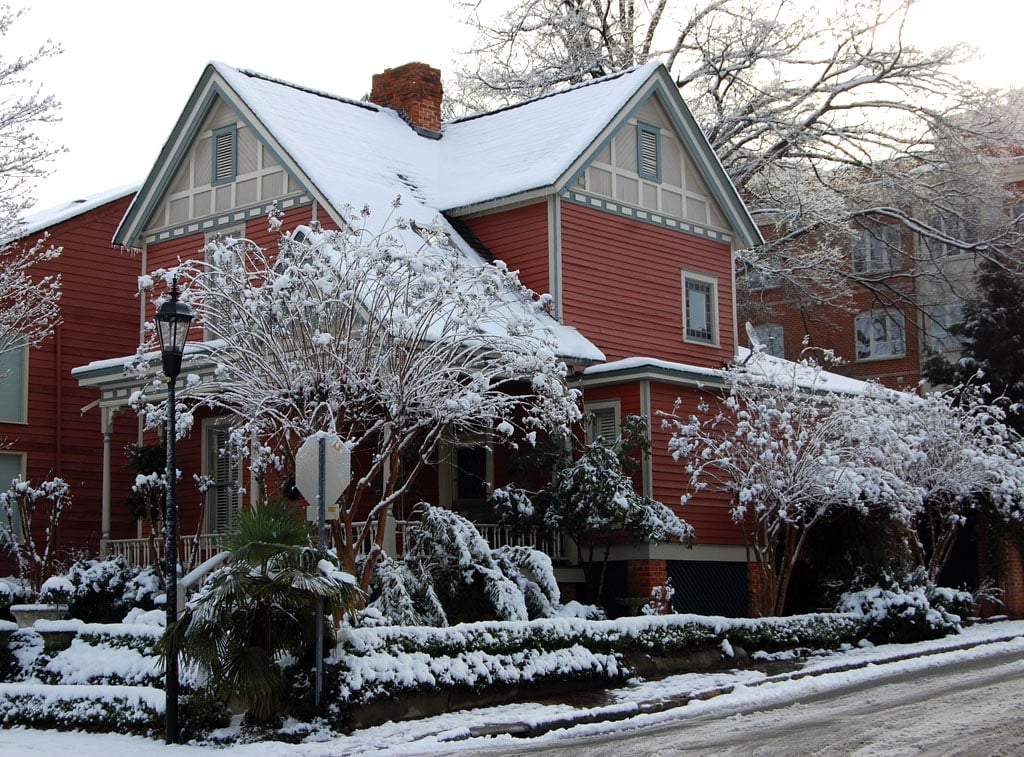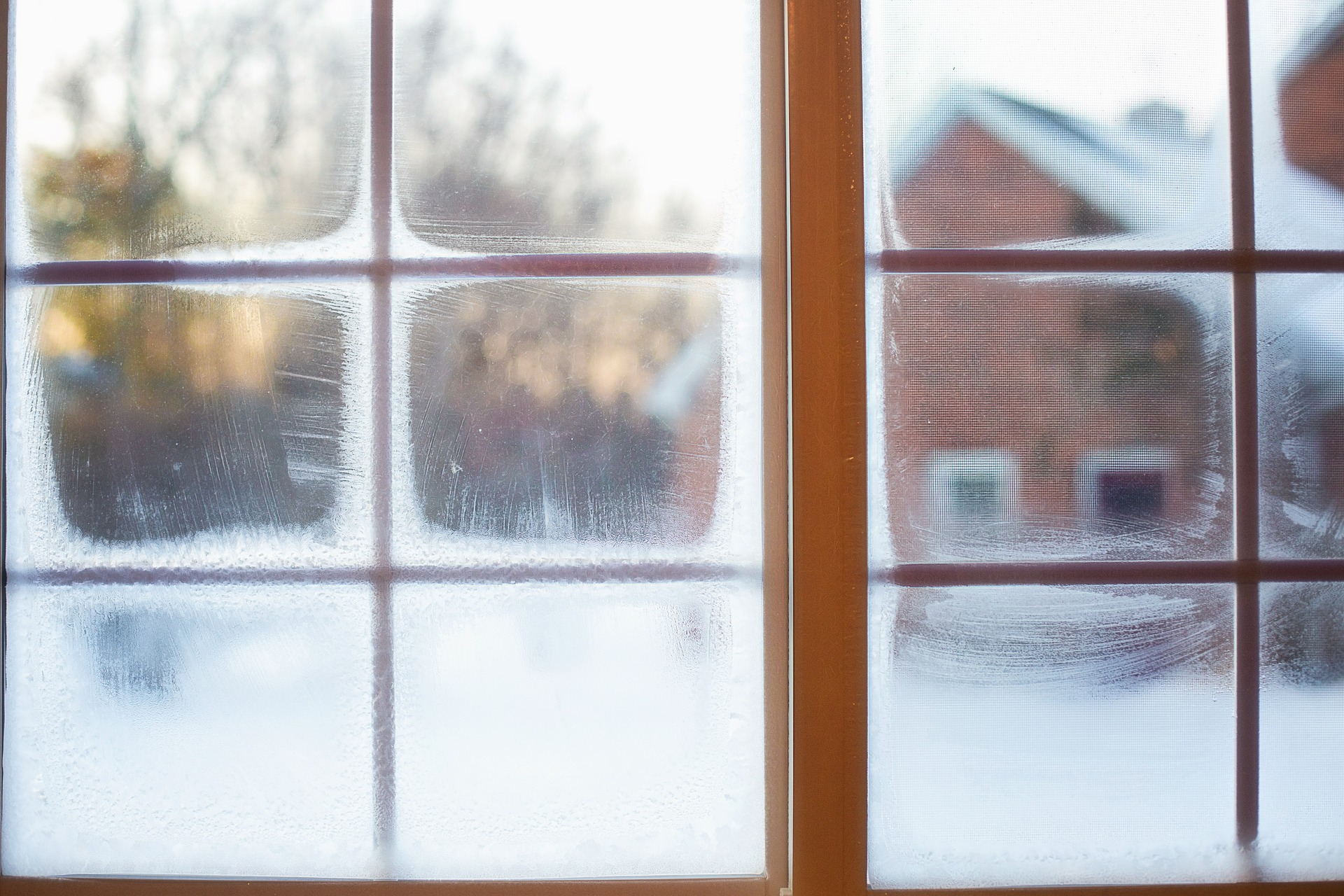 Now that winter has arrived in full force in Northern Virginia and Southern Maryland, you need to pay attention to your roof.
Now that winter has arrived in full force in Northern Virginia and Southern Maryland, you need to pay attention to your roof.
Your roof protects you from the harsh elements of the winter season, keep it in top shape by following five winter roofing tips from our home improvement experts.
1. Trim Tree Branches
Trees are a great way to adorn your home with a touch of nature and create natural shade for your property. Unfortunately, majestic as they are, you cannot tell a tree where and how to grow. Severe weather can cause a tree to wreak havoc on your home.
During the winter, overgrown branches can break under the heavy weight of snow and fall catastrophically on your roof. Smaller branches can scrape and create significant holes to your roofing system.
While these damages may not be easily visible to you, it could lead to leaks that will be difficult to repair during the winter. Be sure to trim tree branches, especially near your roof to prevent heavy snow and forceful wind gusts to cause them to damage your roofing system. To ensure the pruning process does minimal damage to the tree, follow the directions outlined by Trees Are Good or hire a professional.
2. Remove Debris
Leaves, bird droppings, twigs and other debris belong in the compost pile or trash can, not on your roof. Remove debris regularly to prevent it from causing expensive damage to your roofing system. Debris can also cause ugly and damaging mildew growth and holes where water or animals can enter your home. For safety purposes, be sure to ask a friend to assist you if you attempt to climb the roof to remove any accumulated debris.
3. Clean Gutters
As debris damages your roofing system, they can also clog the gutters. A gutter filled with leaves, acorns and other items restricts the flow of water. Water accumulating in the gutter can overflow and damage the foundation of your home. Moreover, during the winter, water in the gutter can freeze into ice, eventually weighing down the gutters and causing them to collapse. Collapsing gutters can also cause significant siding and roofing damages which can be pricey to fix. Clean your gutters regularly to ensure water from storms or melting snow flows freely this winter season.
4. Remove Snow
It looks pretty on the ground, but Dr. Karl VanDevender and Doug Petty of the University of Arkansas Agriculture Cooperative Extension Service found that heavy, wet snow can weigh up to 20.81 pounds per cubic foot. Even a sturdy roof may be unable to support that kind of weight, and an older or fragile roof could easily collapse after a heavy winter storm.
To prevent roofing collapse and damages, remove snow from your roofing system as soon as possible. Use a snow roof rake, plastic or aluminum shovel to clear the snow off your roof. For safer and faster snow removal, hire professional assistance to clear the snow off your roof. During especially heavy storms, you may have to remove snow several times to prevent accumulations.
5. Install Attic Insulation
Effective attic insulation works for all winter and is a nearly effortless way to maintain an even temperature in your home, lower your utility bills and improve your home's value. Follow Energy Star's recommendation and inspect your attic. If you see visible floor joists or uneven spots of insulation, you need to install more product. Likewise, look at the roof. Hot spots where the snow melts faster indicate uneven insulation. If you determine that you need to install more insulation, hire a professional to do the job and look for effective and budget-friendly insulation products.
Safety Precautions
Whether you're trimming tree branches or removing snow from the roof, remember to keep the following safety precautions in mind:
-
Wear protective clothing that keeps your body dry and warm. Weather.com recommends you wear layers, gloves, a hat and sunglasses.
-
Use grip shoes if you must climb onto the roof. Avoid doing so unless you absolutely have to.
-
Work slowly to prevent injuries. Warm up before working on the roof and bend at the knees rather than twisting. Warming up will reduce the chance for back strain and other injuries.
-
Ask for help. A family member or friend can hold the ladder as you climb onto the roof and work alongside you to remove snow.
-
Watch your head, pay attention to where you're walking and wear protective gear like a respirator and a long-sleeved shirt and pants if you decide to install attic insulation yourself.
If you follow these tips, your roof stays protected all season and you can stay warm and cozy in your Northern Virginia and Southern Maryland homes.
Image Credit: James Willamor












Comments